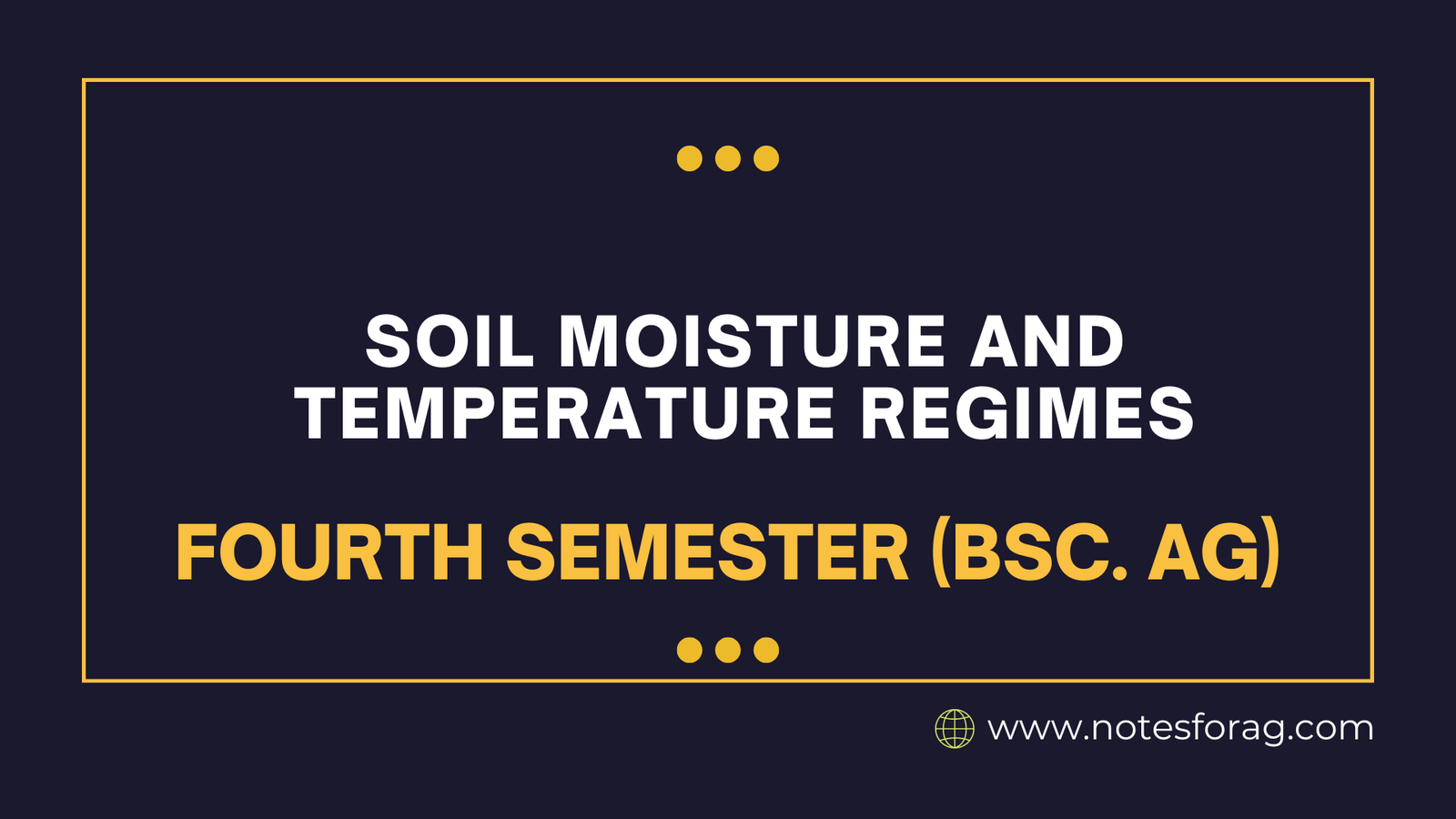Soil moisture and temperature regimes are two significant categorisation schemes that classify soils according to the water content and temperature variations in the soil profile.These regimes have a major impact on many facets of plant growth, soil behaviour, and ecosystem processes.
Table of Contents
Soil Moisture Regimes
These regimes classify soils based on the length of time that plant-available water is present during the growing season. Here are some key categories:
- Aquic: These soils frequently become saturated, usually as a result of a high water table. Because there may be little oxygen available, the environment may not be ideal for plant growth.
- Udic: These soils are found in humid or subhumid environments with a moderate distribution of rainfall. Most plants can get enough moisture there during the growth season.
- Ustic: These soils are characteristic of semi-arid climates with seasonal moisture deficits. Plant-available water is limited during part of the growing season.
- Aridic: These soils are prevalent in arid climates with minimal rainfall and protracted dry spells. Water availability limits plant development.
- Xeric: Mediterranean regions with hot, dry summers and cool, wet winters are home to these soils. Throughout the dry summer months, plant development may be restricted.

Soil Temperature Regimes
These regimes classify soils based on the mean annual soil temperature regimes and seasonal fluctuations at a specific depth (typically 50 cm). Here are some examples:
- Cryic: These soils have very cold temperatures with mean annual temperatures below 8°C and cold summers. Permafrost may be present.
- Frigid: These soils have cold winters and cool summers with mean annual temperatures between 8°C and 15°C.
- Mesic: These soils have moderate temperatures with mean annual temperatures between 8°C and 15°C and relatively small seasonal fluctuations.
- Thermic: These soils have warm temperatures with mean annual temperatures between 15°C and 22°C.
- Hyperthermic: These soils have very warm temperatures with mean annual temperatures exceeding 22°C.
Importance of Soil Moisture and Temperature Regimes
Understanding these regimes is crucial for various reasons:
- Plant Growth: Different plant species have different needs in terms of temperature and moisture. It is easier to choose appropriate crops or manage existing vegetation when one is aware of the soil regimes.
- Microbial Activity: The activity and makeup of soil microbial communities, which are essential to the cycling and breakdown of nutrients, are greatly influenced by the temperature and moisture content of the soil.
- Soil Formation: These regimes can influence the rate and type of weathering processes occurring within the soil, impacting its overall characteristics.
- Land Management Practices: An understanding of soil moisture and temperature regimes facilitates the decision-making process regarding irrigation techniques, fertiliser use, and land use planning.

Importance of Understanding Regimes:
Knowing the soil moisture and temperature regimes of a particular location is critical for:
- Land use planning: Understanding these regimes helps determine which crops or vegetation are best suited for an area, or if a particular area is suitable for agriculture at all.
- Water management: Soil moisture regimes inform strategies for irrigation and drainage.
- Environmental management: Knowledge of these regimes is essential for predicting the effects of climate change on soil properties and ecosystems.
- Engineering and construction: Soil temperature and moisture content affect the stability and strength of soil, impacting the design and construction of structures.
Conclusion
Soil moisture and temperature regimes are valuable tools for understanding soil behavior and its suitability for various purposes. By considering these regimes alongside other soil properties, we can make informed decisions for sustainable land management practices and ensure healthy ecosystems.
Frequently Asked Questions (FAQs)
What are the 5 soil moisture regimes?
The Soil Survey Staff (1975) has defined seven different soil moisture regimes: aquic, peraquic, udic, perudic, ustic, xeric, aridic and torric.
What is the relationship between soil moisture and temperature?
The soil moisture is inversely proportional to the soil temperature change (ΔT), that is, the soil moisture (W) is inversely proportional to the soil temperature (T) (Q = 4.2 × 10 3 V × (0.2 + W) × ΔT).
What are the five major soil forming regimes?
Climate, organisms, relief (landscape), parent material and time are five major factors of interaction creating different types of soils.
Related Articles

